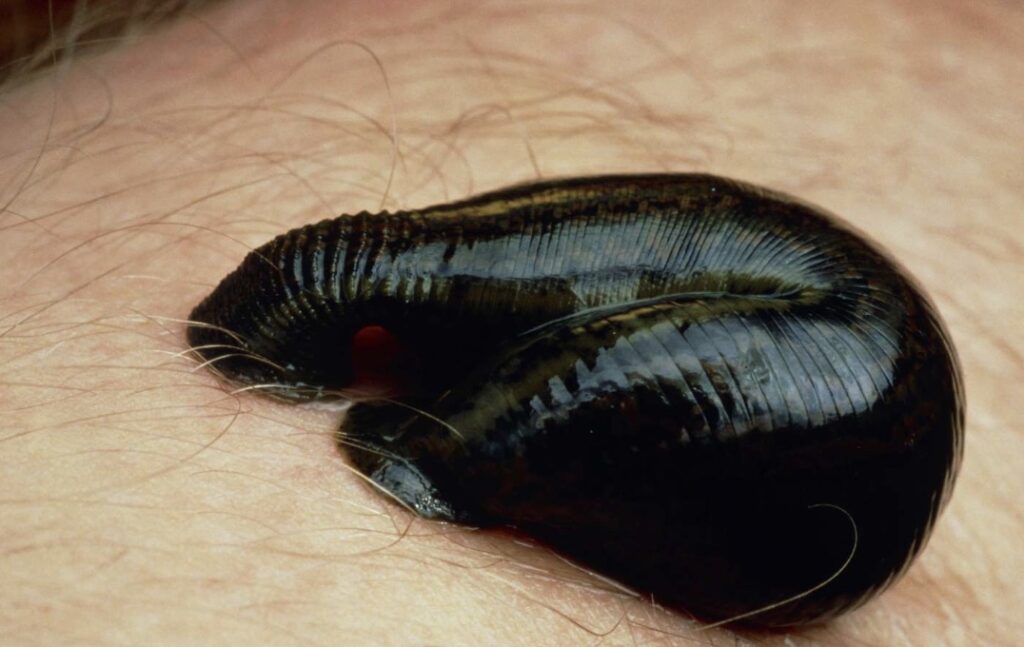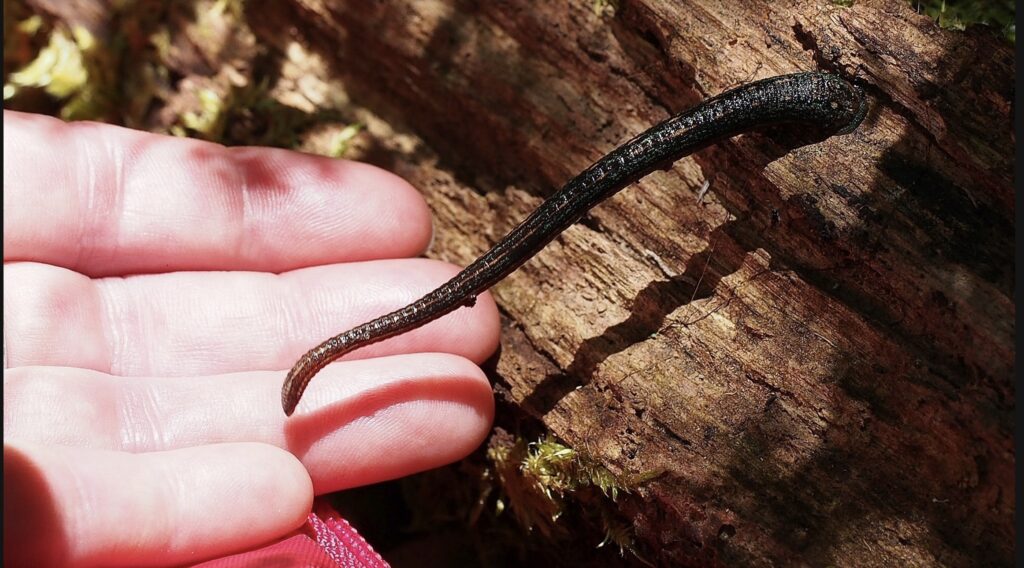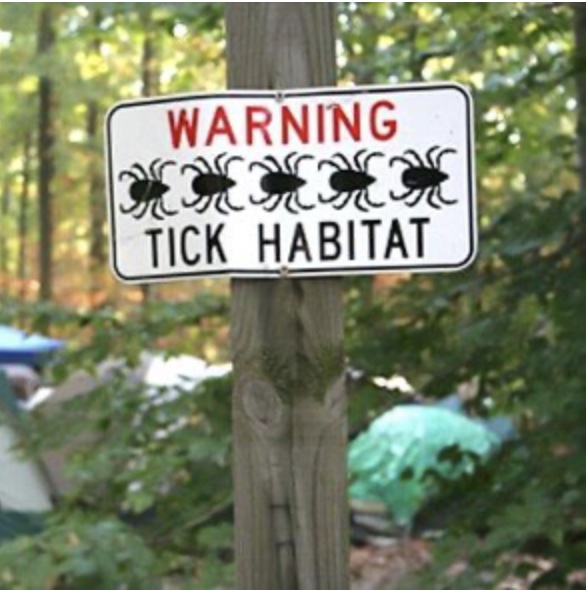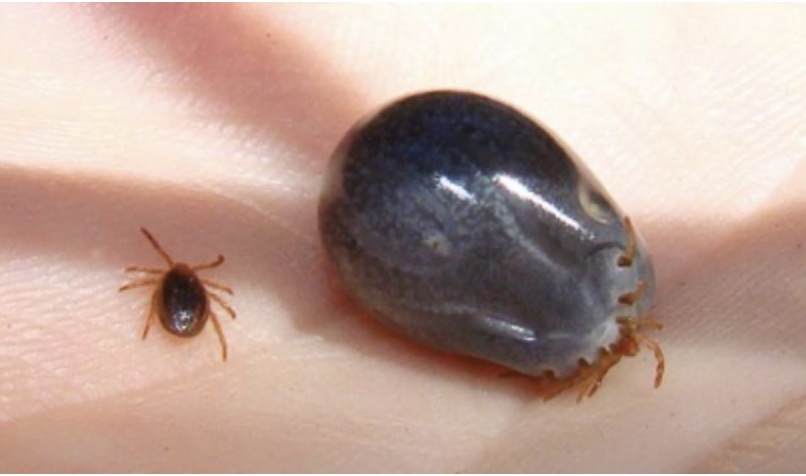In April 2021, I wrote a blog about memorable fauna stories. You will note that I didn’t mention leeches, mainly because I never panicked when they were on me. I didn’t like them, but I tolerated them. I had to when walking in the wet bush all day, especially in the always moist forests in north-west Tasmania.
Whilst I was never too fussed about leeches on my person, some work colleagues and a few office workers would run a mile when they saw them, let alone when they encountered them.
Leeches are parasitic worms related to the earthworm. They feed by attaching to their prey with a sucker, glueing themselves in place with mucus, then secreting an anticoagulant so the blood flows easily into the leech. They also release an anaesthetic to numb the area so you don’t feel it is there. Some leeches only eat twice a year, so they need to take in an enormous feed when they can.
Although the idea of leeches can be horrible, they are not dangerous for humans. The amount of blood they take is tiny and, although they can cause a localised infection at the bite site, this is rare and usually mild and easily treated. For me, the worst irritant is the bite site can be very itchy for a few days.
Just remember, leeches are easy to remove. No need for matches, kerosene or other magic potions. You just need to pluck up the courage to touch them. While they may be a bit more difficult to remove when they have bitten into your skin, all you have to do is vigorously roll them into a ball. They hate that and will let go. You then simply flick them away.
At university, we spent a lot of time driving to the bush for practical sessions in Mitsubishi vans, and we carried a football to occupy us during idle times at stops. Someone would kick it high in the air, and a pack of foresters would contest for the mark of the year. At one stop, there were leeches everywhere on the ground. So, I decided to surreptitiously place several leeches on the football and then targeted students I knew were squeamish with them, yelled out their name and passed the footy to them. The squeals when they caught it were great entertainment – for me, at least.

Another leech story was while my wife and I holidayed in north Queensland. We decided to do the walk around Lake Barrine on the Atherton Tablelands. It had been wet before our visit, but that day was nice and sunny. Before we left, these poor German backpackers stumbled back to the main teahouse, cursing loudly and miserably. They wore thongs on the walk, and their unguarded ankles were full of blood. They told us the leeches were relentless (or words to that effect in half German with, I am sure, a few expletives thrown in).
As we wore hiking boots and socks, we decided to do the walk thinking we would be immune from similar attacks. We were wrong. Less than 500 metres in, I was amazed at how many leeches we encountered. We couldn’t afford to stop and admire the view or trees, otherwise a significant number would be onto us. I remember clambering onto a wooden seat at one stage to get off the ground while I waited for my wife to catch up. It was my only chance of respite. They were indeed relentless.
Talking about relentless leeches. One day at work, a group of us went for a scout in Bellinger River State Forest at the base of the Dorrigo Plateau in northern New South Wales, looking to open a coupe for logging. The area hadn’t been logged for over 30 years, and we walked on an overgrown old road. It was a hot and humid summer day, and we stopped for a bite to eat and drink water in the late morning. I swear the leeches, which hadn’t smelt or enjoyed human skin for over 30 years, gleefully made a beeline for us. They came from everywhere. I have never seen so many at one location. Consequently, our break didn’t last long, and we spent the rest of the day continuously getting rid of leeches from our boots, socks and ankles.
Having spent my early forestry career walking in the bush in Queensland and northern New South Wales, I was used to leech encounters. So, when I moved to north-west Tasmania, I didn’t expect to come across leeches in the bush. I thought it would be too cold for them. I was wrong.
I will never forget returning to the office after a field day in Tasmania. Taking my work boots off to put my Blundstone slip-ons for the office, I noticed a bit of blood on my leg above the sock line and sure enough, hidden beneath the blood-soaked cotton was an engorged leech. So engorged I didn’t have to pry him loose. I decided to show the leech to one of the ladies in the office. I knew she didn’t like them, or spiders, or any other critters for that matter. But I didn’t realise that she would freak out when the leech was placed on her desk. She screamed so loud and carried on. It caught everyone’s attention in the building.
A full-blown emergency quickly overtook the initial laughter at my prank as she went into full panic mode. I am talking about a severe panic attack which took my once respectable standing in the office to an all-time low. Afterwards, I had to invest in many chocolate frogs to win back any favours.
Another leech story, thankfully, involved someone else. I hosted a busload of academics and interested persons on a native grasslands tour in north-western Tasmania. Someone gave a presentation at the Vale of Belvoir, one of the stops not far from the entrance to Cradle Mountain, and then people dispersed to look more closely at the area. Suddenly, a group had assembled around someone. Unfortunately, he had a leech attached to his eyeball below his eyelid in a very difficult spot. How it got there is a mystery. It took well over 30 minutes to remove the leech. While ocular infestation by a leech is a rare occurrence, if not treated properly, it can cause problems and professional medical help should be sought when affecting vital organs.
Speaking of vital organs, a colleague told me when one of his workmates found a leech firmly ensconced on his todger. He panicked and sought advice over the company two-way radio system. The sage response from the health and safety officer was to remove whatever was the smallest.
But the best leach story I have involved our regular visits to Bruny Island in southern Tasmania each year to stay at the old forestry house near Adventure Bay. Our friends from Bendigo always arrived before us and got things set up. This particular year the blackberries at the end of the mown paddocks surrounding the house were full of fruit. June (not her real name to protect her identity) decided to pick the blackberries and make a pie for our Easter stay. Not long into her picking, she noticed leeches were attacking her. Screaming, she ran back to the house, calling out for her husband Peter (not his real name to protect his identity) to save her. She quickly stripped off and ordered him to do a body search to remove all the leeches. We arrived a few hours later and were entertained by the recital of the experience. Thankfully we weren’t there to witness the spectacle of a panicked naked wife ordering her husband to closely examine as many nooks, crannies and orifices to remove every offending leech.
As well as the normal leech, Tasmania also hosts the unique and cryptic tiger leech, so called because of distinct stripes along its reddish-brown back. These critters are enormous – more than double the size of a regular leech.

They resemble a slug being over 50 millimetres in length. There are many stories of people bitten by them and ending up in hospital.
Another inconvenience in the bush is ticks. They are parasites that feed on human and animal blood. They attach to soft areas of the skin by piercing their mouthparts onto it. They can sense human body heat and sweat from up to four metres away. Of the 70 species of ticks found in Australia, only about 16 like to, or are able to feed on humans. Most of the bites we get from ticks are by the paralysis, grass and bush ticks.

While living in Dalby, we used to go to the Bunya Mountains during summer to escape the heat on the plains. They recommend visitors to the mountains wear a hat when walking in the bush as ticks were known to fall out of the overhead canopies.
I find ticks won’t hurt you if you know how to treat them. Unlike a flea, you don’t feel them when they crawl on your body. Thus, they give no warning they are on you until they get a taste of you! You usually feel an itchy or stinging feeling when they bite.
Unfortunately, ticks are also known to carry harmful diseases such as rickettsial diseases, including Flinders Island spotted fever, Queensland tick typhus and lyme disease-like conditions. Worst of all, some people are deathly allergic to ticks. Australian ticks in particular are known for causing Mammalian Meat Allergy and tick bite anaphylaxis.
It is best to extract them as soon as they are detected before they have time to secrete their poison. Don’t bother applying an irritant to make them release their hold, as it doesn’t work. Although medicos do recommend a freezing spray containing ether. These can be found commonly in most pharmacies and a good addition to your first aid kit. I found metho and kero kill the tick, preventing further poisoning, but they must still be pulled out.
The best extraction method is to grip them between the thumb and forefinger using the nail to ensure a grip and pull at right angles to the skin. Metal tweezers also work, but they tend to cut the head off, which isn’t a big deal apart from itching for a few days until your body rejects it in a few days.
One of the best tick stories was when we were camping in the Watagan Mountains in New South Wales and planned to do some spotlight surveys and owl calls. We lived nearby at Lake Macquarie and did this often as an extension of what we did for work. At the campsite was a couple with a young son keen to accompany us on our little adventure in the bush when we told them about our plans that night.

Before we planned to go, I felt a persistent itch start in the nether region. Not getting any comfort, I dropped my strides to take a closer look. Sure enough, attached to one of my testicles was a huge engorged paralysis tick. Struggling to get it out, I sought the assistance of my wife.
The extraction job took a while as the tick was firmly embedded in my scrotum. When we were finally ready, our new camping buddies had a change of mind and didn’t want to accompany us. I think they may have come over to see why there was a delay and saw my wife in a rather uncompromising position in front of me with my pants below my knees and quickly turned around.
Another time, we camped at Myall Lakes National Park and did one of the walks. There was a section through tall blady grass, and as soon as we got through that section, my wife and I began itching and had an unnerving feeling. We realised we had ticks on us, and we both had to completely strip off in the middle of the walking track to remove as many as possible before they bit into us and then quickly move on.
I am sure there are many more leech and tick stories. Why not leave a comment and share your story.

Hello Robert,
We have loved reading your blog on leeches and ticks, thank you.
I grew up in Northern Victoria on an irrigated farm, hence we learnt to swim in the channels providing the farm with its water. The leeches in the channel were horrendous!!!
We couldn’t loll around in these muddy waters because once still, the leeches would magnetically attach themselves to any naked flesh!!
We kept a bowl of salt beside our swimming hole to rub on them, after much screaming!! I would never now get into any of these channels!! Back yard chlorinated pools for me. 😜